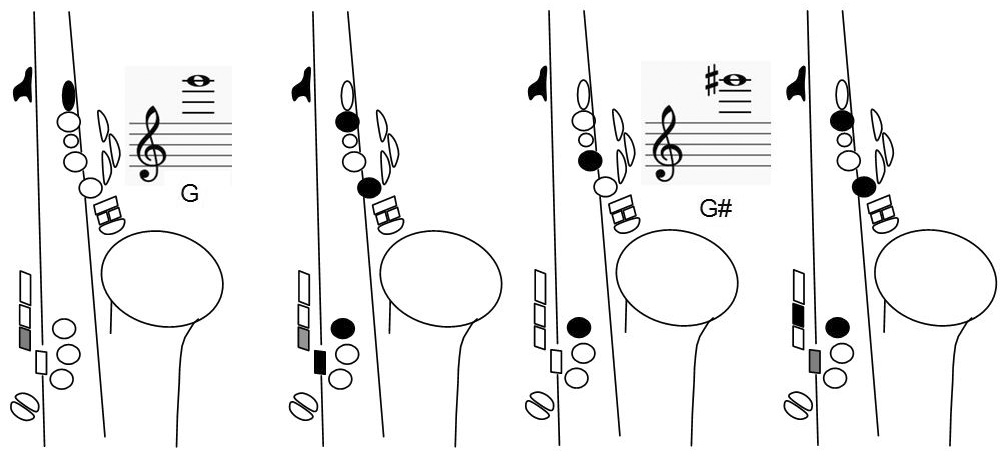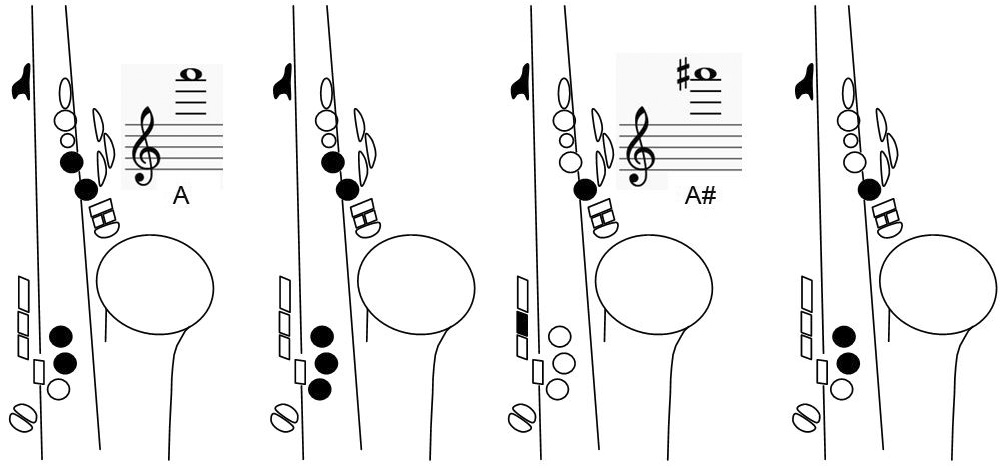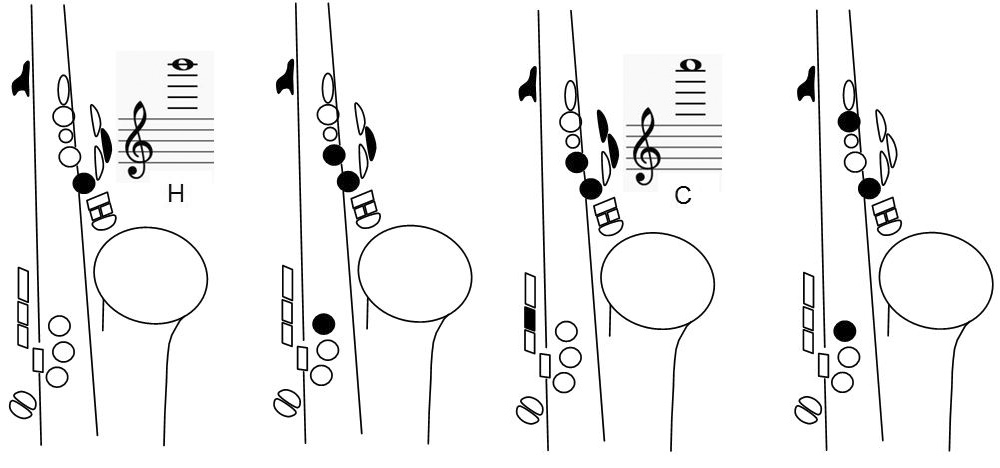The new fingerings
In the last episode of this workshop about the play with High Notes, I presented new or rather alternative fingering options for the pitch range up to F#""". The focus was mainly put on playing the known pitch range with new and alternative fingerings, so that in the further development of the exercises, the transition to the Altissimo register succeeds easier, even beyond the the normal pitch range. Analogous to the last workshop, I'll demonstrate different fingering possibilities for the respective tones by means of a fingering scheme before facilitating the handling of the new audio material with specific exercises.
High Notes – the big challenge
I respect everyone who is able to play the new High Notes with the presented fingering examples. I have to add, though, that the shown fingerings – from my own experience – are fingerings which work best with the tenor saxophone. In other words, I can play the tones in a useful intonation in my way of playing on my instruments and the fingering are designed in a way I can integrate them smoothly into my play. The latter is primarily a matter of habit and practice, though. For everyone who doesn't get to a satisfying result with the presented fingerings for their High Notes, I can say that there is a variety of fingerings for every single tone. Depending on the instrument (alto sax or tenor sax) and model (modern or vintage sax), it has to be found out which fingerings work best for the player. Very extensive fingering charts which also take into account the different instrument and various intonations can be found in: "Sigurd Rascher: Top Tones for the Saxophone - Carl Fischer, New York"
"Larry Teal: The Art Of Saxophone Playing - Summy-Birchard Music, Alfred Publishing" and something more actual: "Peter Wespi: peter wespi’s big bang studio presents: Die ultimative Grifftabelle für Saxophone“.
New tones, new fingerings
After having learned how to play the usual pitch range up to F#""" with the new fingering in the last workshop, it's getting serious today: The G""". It is noteworthy because the high G is always kind of moody and not as easy to play as the A""" for example. So don't get desperate but maybe skip G""" instead and continue practicing with A""". Once you got some more confidence with this one, you an try the G again later.
High Notes exercise 1
The following exercises are perfect to practice the new fingering for the High Notes. They are supposed to be played slowly and both, legato and portato. Look for a nice, stable tone and a clean intonation. Support the tones with the alternative fingering through your oral cavity as a resonance space – exactly like in the overtone exercises. You should choose the presented fingering you feel most comfortable with and use it as your standard.
In this exercise, the tones E""", F""" und F#""" should be played with the fork fingering technique, just like we presented it in the last episode of this workshop. As an introductory exercise, I consciously chose the version with major triads because the intonation is quite easy to control here.
High Notes exercise 2
The following exercise is quite complex and requires a secure handling of the new High Notes fingerings. Play these exercises in a very slow manner until you master them confidently. In the beginning, always play this exercise one octave below the one that's written down, so the melodic direction is quite comprehensible. Always keep in mind the correct intonation when you repeat the exercise in a high register, as noted.
Finale
With this edition, I want to end the workshop series about “High Notes”. Of course, there's a lot more to say about this topic than what we would be able to put into a single workshop. Anyway, I hope to have given you a little insight into the function and practical usage of flageolet and alto register.
In the end, a little hint about the handling of “High Notes”: Use the “high Notes” as highlights! Top your solo with it. Maybe look for some tones that fit well into a solo – depending on their tonality – and integrate them in a way that a good performance is still possible when performing live in front of people. Once your experience and practice of how to use High Notes increases, your fields of application will become more extensive as well.
Have fun with the “Honk and Scream”
Keep on Blowing!







